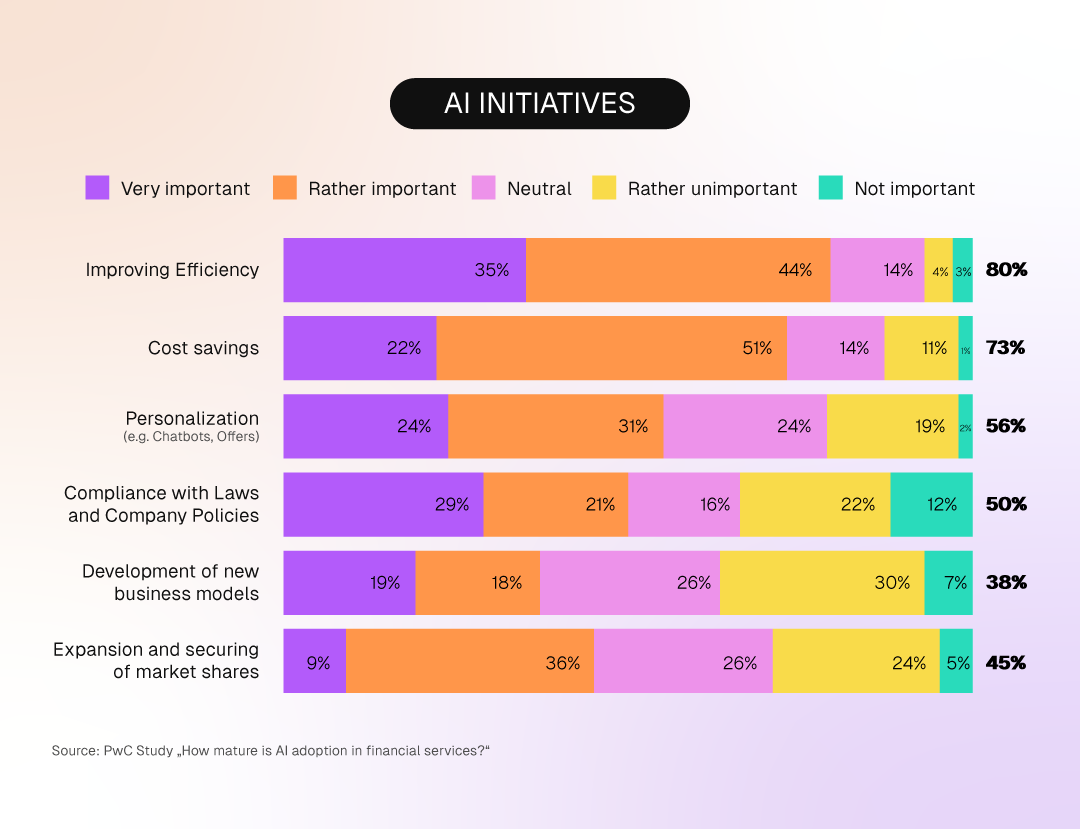Data + GenAI: The Next Technology Wave in Financial Services

For technology and innovation leaders in banks, fintechs, and financial service providers, the conversation around data and AI has entered a new phase. Generative AI (GenAI) is no longer an experimental tool—it’s becoming a foundational technology layer that reshapes how institutions understand customers, assess risk, and design products.
In an industry where every transaction, click, and conversation generates valuable data, financial institutions are learning that their competitive advantage lies not only in collecting information but in making it actionable. GenAI extends this capability by turning raw, structured, and unstructured data into insights, simulations, and even executable workflows.


From automation to augmentation
For years, financial institutions have relied on automation to reduce manual workloads—whether in loan processing, KYC, or claims management. GenAI brings a step change: it doesn’t just automate, it augments human decision-making.
Imagine a credit analyst reviewing a small business loan. Instead of manually gathering balance sheets, past interactions, and risk reports, a GenAI-powered assistant can synthesize all data points, summarize borrower patterns, and even simulate repayment scenarios based on historical clusters. What used to take hours now happens in seconds—with human oversight still at the center.
This transformation depends on robust data foundations. Clean, governed, well-integrated data sources allow GenAI models to reason effectively without hallucination or bias. That’s why many institutions are pairing GenAI adoption with a broader data modernization effort, ensuring security, lineage, and explainability across every dataset.
Architecting for scalability and trust
Financial organizations operate under some of the strictest compliance regimes. That’s why modern AI architectures in finance emphasize traceability, auditability, and control. On platforms like AWS, financial teams can deploy GenAI within secure environments—leveraging private endpoints, encryption keys, and fine-grained identity management to protect sensitive data.
Layered data architectures are now the norm:
- Data lakes (Amazon S3, Lake Formation) unify structured and unstructured data.
- Analytics and feature stores (Glue, Athena, SageMaker) enable consistent, explainable model training.
- Generative reasoning layers (Amazon Bedrock, Knowledge Bases) deliver contextual understanding directly to analysts and advisors.
This modular approach ensures that AI systems grow as the business scales, while maintaining the governance needed for audits and compliance.
A catalyst for new financial experiences
The most exciting outcome of GenAI and data convergence isn’t just efficiency—it’s personalization. Financial institutions can now generate insights that feel tailor-made: investment summaries written in plain language, personalized spending analyses, or dynamic product recommendations informed by real behavior rather than static rules.
At the enterprise level, GenAI is redefining collaboration. Teams across credit risk, marketing, and compliance can interact with shared data through conversational interfaces—asking questions like “Show me the top three risk factors for our SMB portfolio this quarter”—and getting grounded, explainable answers in seconds.
The road ahead
The institutions that win in the next decade will be those that treat data and GenAI not as separate initiatives but as one ecosystem. Integrating these technologies requires thoughtful design—secure data pipelines and data platform, clear governance, and measurable outcomes.
At Switch Software, we’ve seen how aligning GenAI initiatives with data modernization unlocks both speed and trust. From data readiness assessments to model orchestration and secure deployment, the path to intelligent automation is clearer than ever. The opportunity isn’t just to adopt GenAI—it’s to reimagine what’s possible with it.